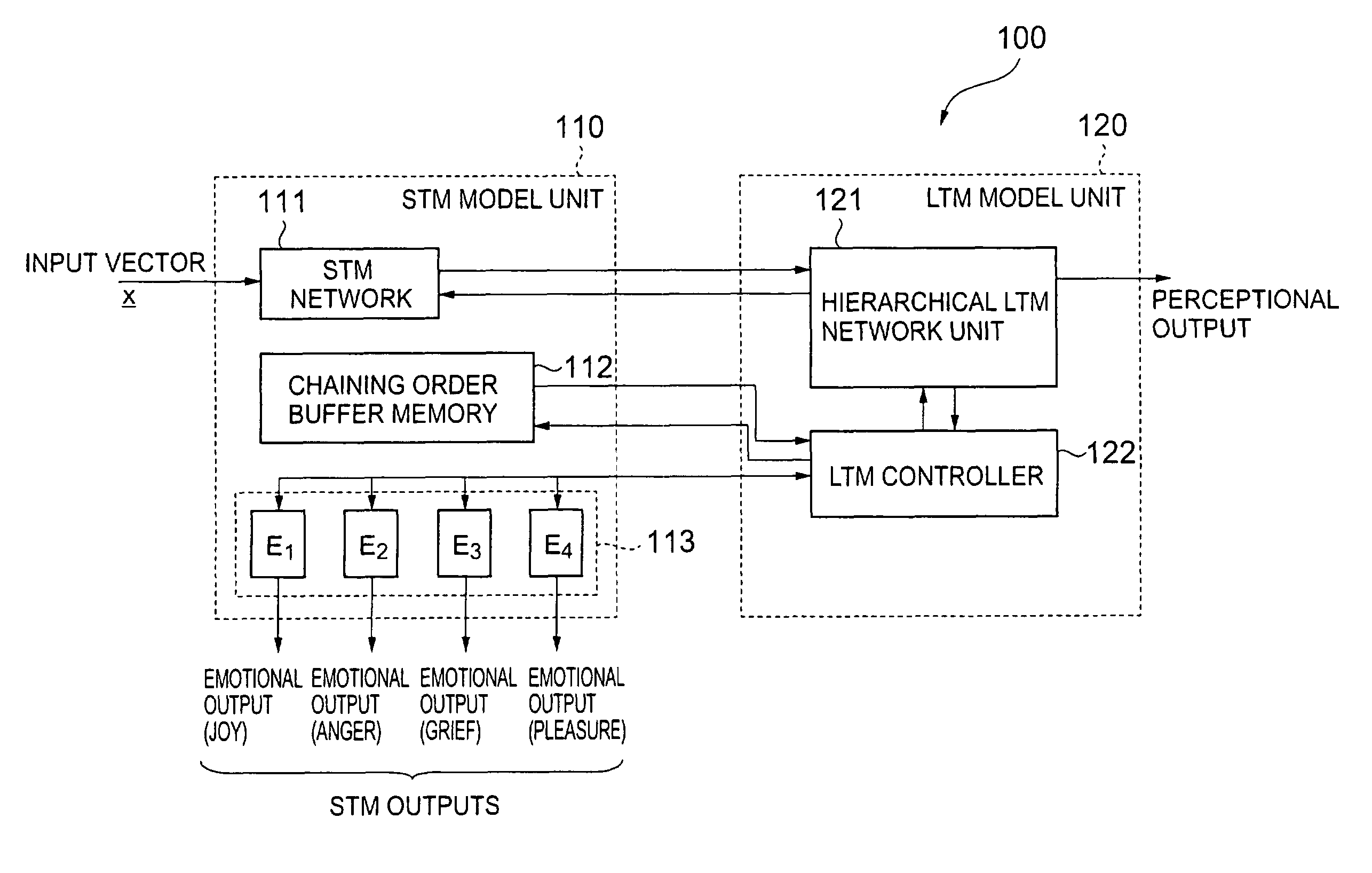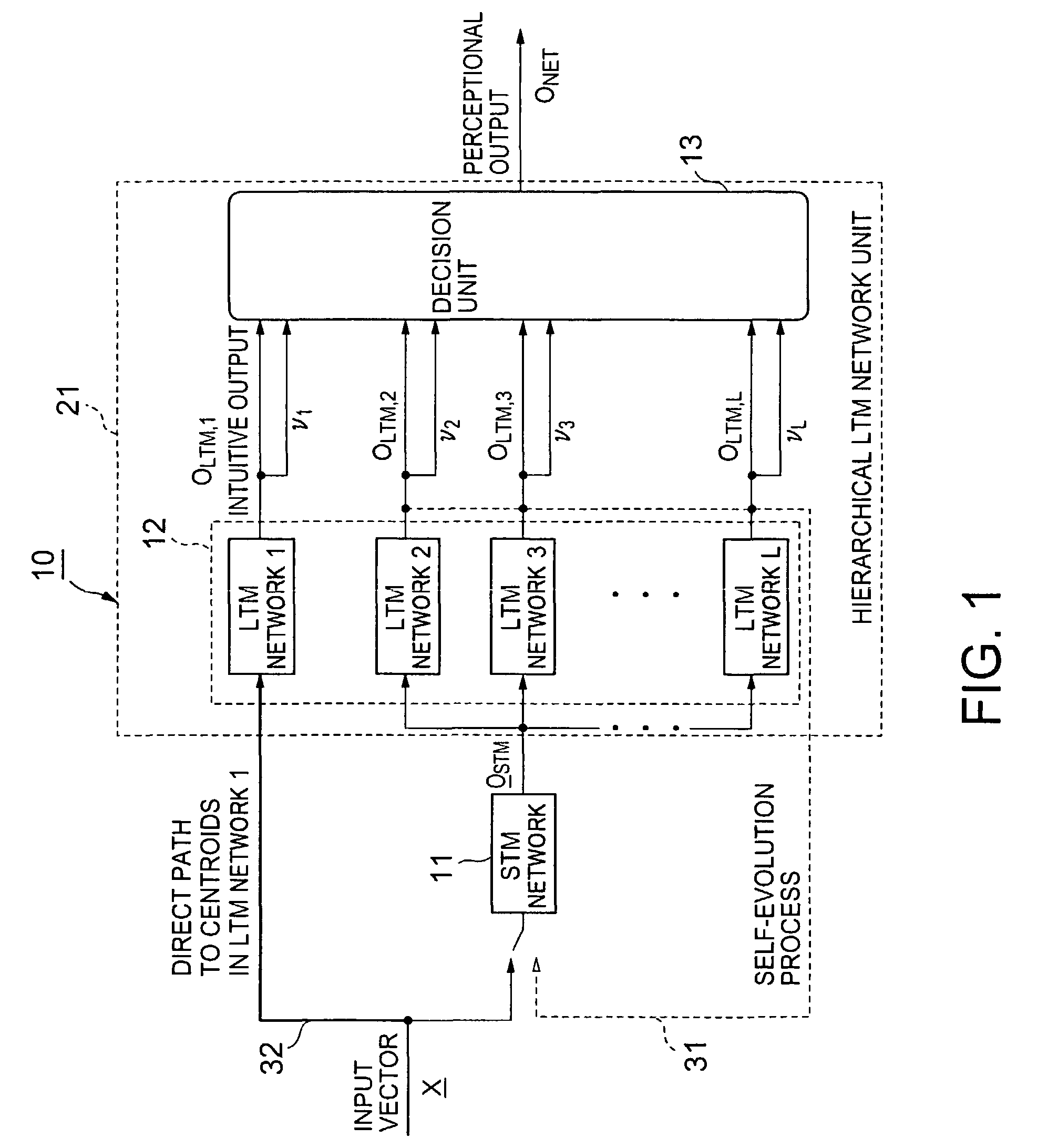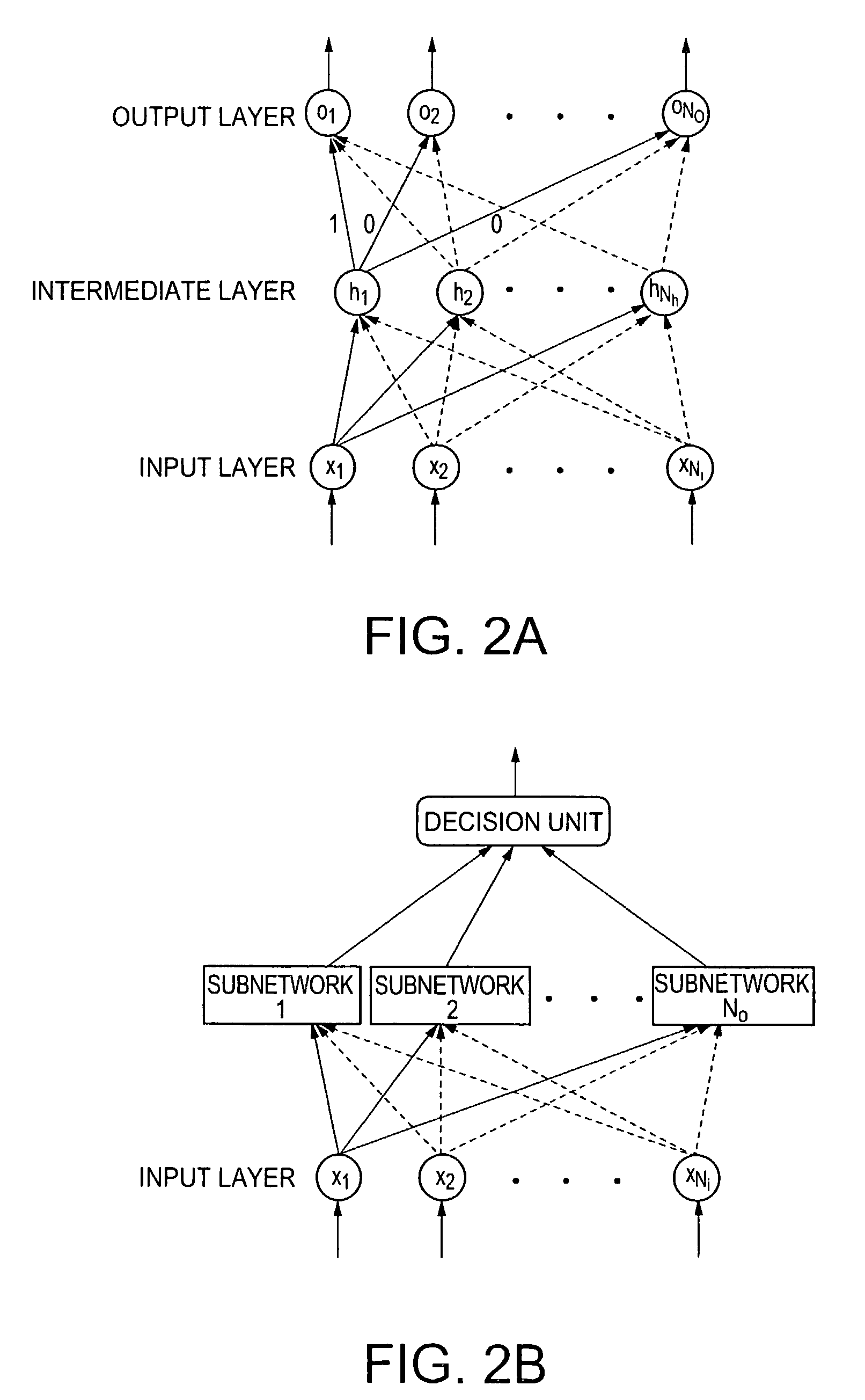Long-term memory neural network modeling memory-chaining functions of the brain wherein a pointer holds information about mutually related neurons and neurons are classified hierarchically by degree of activation
- Summary
- Abstract
- Description
- Claims
- Application Information
AI Technical Summary
Benefits of technology
Problems solved by technology
Method used
Image
Examples
first embodiment
[0060]A memory system in a first embodiment of the present invention will be described. The memory system in the first embodiment models states of ‘intuition’ and ‘awareness’, i.e., psychological functions of the brain, by an artificial neural network structure. Hierarchically arranged generalized regression neural networks (HA-GRNNs) are evolved according to input pattern vectors to explain and embody states of ‘intuition’ and ‘awareness’, i.e., psychological functions of the brain.
[0061]
[0062]A generalized regression neural network (GRNN) as a basic element of a hierarchically arranged generalized regression neural network (HA-GRNN) employed in the memory system in the first embodiment will be described.
[0063]FIG. 2A shows a multilayered generalized regression neural network (ML-GRNN) having Ni input neurons, Nh intermediate neurons, and No output neurons.
[0064]In FIG. 2A, the input neurons xi (i=1, 2, . . . , Ni) correspond to the elements of an input vector x=[x1, x2, . . . , xN...
examples
[0159]Concrete examples of the first embodiment will be described hereinafter. In this example, simulation experiments were conducted using a typical pattern set for a digit voice classification task for constructing a HA-GRNN as a memory system to validate the modeling of the states of ‘intuition’ and ‘awareness’, i.e., psychological functions of the brain.
[0160]In the simulation experiments, a data set extracted from the SFS database ([Ref. [25]] is used to construct a HA-GRNN. The SFS database is a public domain database used for a benchmark for pattern classification tasks. In the simulation experiments, the data set consists of 900 utterances in total of the digits from / ZERO / to / NINE / . Utterances are recorded in English by nine different speakers (including even number of female and male speakers). The data set was arbitrarily divided into two data sets One of the two data sets was used for constructing the HA-GRNN, namely, incoming pattern set; and the other was used for tes...
second embodiment
[0191]A memory system (memory-chaining system) in a second embodiment of the present invention will be described. The memory system (memory-chaining system) in the second embodiment is adapted to model ‘memory-chaining’ and ‘emotion expression’, which are psychological functions of the brain, by an artificial neural network structure.
[0192]The configuration of the memory-chaining system 100 in the second embodiment will be described with reference to FIG. 7.
[0193]Referring to FIG. 7, the memory-chaining system 100 in the second embodiment comprises an artificial neural network structure modeling ‘memory-chaining’ and ‘emotion expression’, i.e., psychological functions of the brain. The memory-chaining system 100 is a layered memory system including a short-term memory (STM) model unit 10 and a long-term memory (LTM) model unit 120.
[0194]
[0195]The STM model unit 110 includes a STM network (short term memory network unit) 111 for temporarily storing an input vector given thereto from ...
PUM
 Login to View More
Login to View More Abstract
Description
Claims
Application Information
 Login to View More
Login to View More - R&D
- Intellectual Property
- Life Sciences
- Materials
- Tech Scout
- Unparalleled Data Quality
- Higher Quality Content
- 60% Fewer Hallucinations
Browse by: Latest US Patents, China's latest patents, Technical Efficacy Thesaurus, Application Domain, Technology Topic, Popular Technical Reports.
© 2025 PatSnap. All rights reserved.Legal|Privacy policy|Modern Slavery Act Transparency Statement|Sitemap|About US| Contact US: help@patsnap.com



